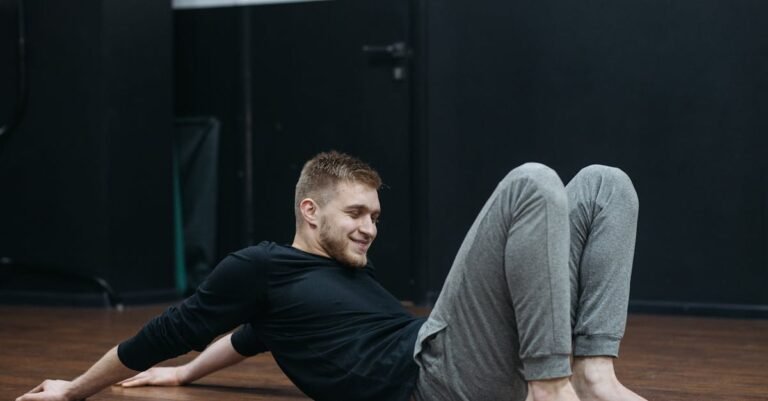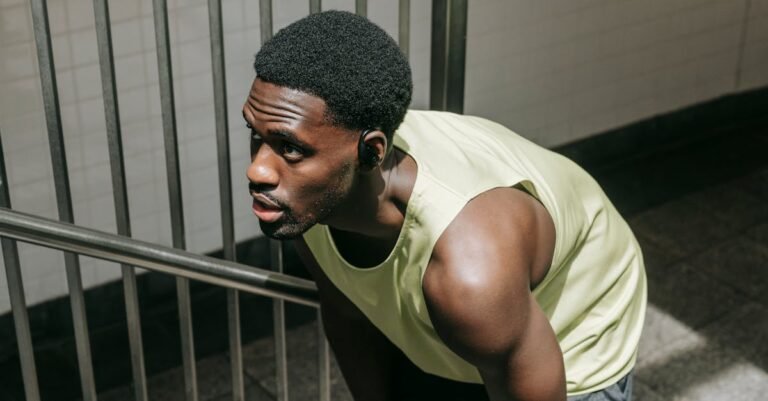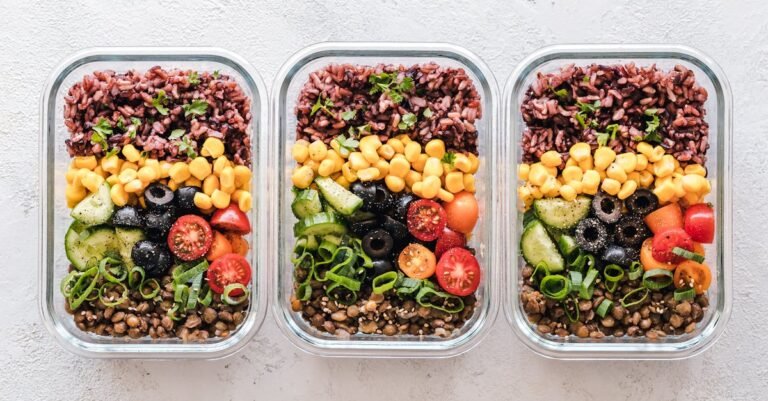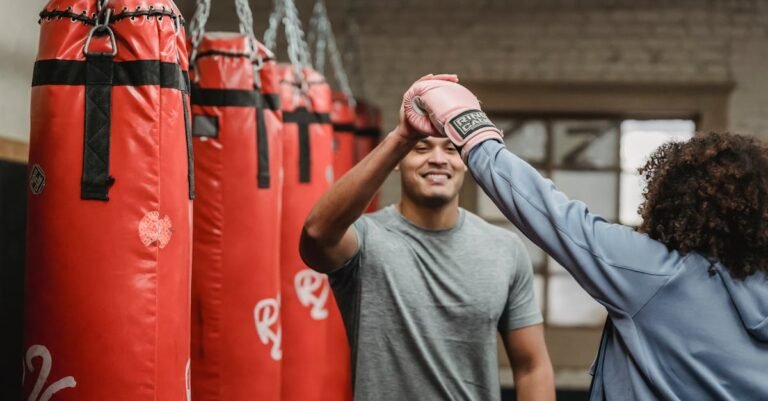Start Your Fitness Journey Today: Easy Steps
So, you’re thinking about it. That little voice whispering (or maybe shouting?) that it’s time to get moving, feel better, have more energy? Starting a fitness journey can feel like staring up at Mount Everest from base camp – daunting, overwhelming, maybe even a little scary. Where do you even begin? Don’t worry, I get it. We’ve all been there. The good news? It doesn’t have to be complicated. Forget the extreme makeovers and impossible expectations. Let’s break it down into simple, totally doable steps to get you moving and feeling fantastic. Ready to take that first step?
Why Bother? Unpacking the Motivation Behind Starting Fitness
Before we dive into the “how,” let’s talk about the “why.” Why even start this whole fitness thing? Sure, maybe you want to fit into those jeans from yesteryear, or perhaps you’re aiming for a specific weight. Those are valid starting points, but fitness offers so much more than just changes you see in the mirror.
Beyond the Scale: Mental and Emotional Perks
Think of exercise as a powerful mood booster. Ever felt stressed, anxious, or just plain grumpy? Getting your body moving releases endorphins – those amazing natural chemicals that act like painkillers and mood elevators. It’s like nature’s own antidepressant! Regular activity can sharpen your focus, improve your sleep quality (we’ll talk more about that later!), and build incredible resilience against stress. It’s not just about physical strength; it’s about building mental fortitude too. Feeling stronger physically often translates into feeling more capable and confident in other areas of your life. It’s a fantastic ripple effect!
Long-Term Health: Investing in Your Future Self
Okay, let’s talk long game. Every step you take, every squat you manage, every healthy choice you make is an investment in your future well-being. Regular physical activity is a powerhouse when it comes to reducing the risk of chronic diseases like heart disease, type 2 diabetes, certain types of cancer, and stroke. It helps manage blood pressure, improves cholesterol levels, and strengthens your bones, reducing the risk of osteoporosis later in life. Think of it as putting money into a high-yield health savings account – the dividends pay off for decades to come. You’re not just exercising for today; you’re building a healthier, more vibrant tomorrow.
Before You Lace Up: The Crucial First Steps
Alright, motivated? Awesome! But hold your horses just a second. Before you jump into jumping jacks, there are a couple of essential pit stops to make. Laying the right groundwork makes the whole journey smoother and safer.
Talk to Your Doc: Getting the Green Light
I know, I know, visiting the doctor might not be your favorite pastime. But trust me on this one, especially if you’re new to exercise, have any pre-existing health conditions (like heart problems, asthma, diabetes, or joint issues), or are over a certain age (generally 45 for men, 55 for women). A quick chat with your doctor can identify any potential risks or limitations you should be aware of. They can offer personalized advice based on your health history and help you choose activities that are safe and effective for you. Consider it your pre-flight check – ensuring all systems are go before takeoff!
Define Your ‘Why’: Setting Meaningful Goals
Okay, doctor’s approval secured? Great! Now, let’s get personal. Why are you doing this? “Getting fit” is a bit vague, isn’t it? To stay motivated, you need goals that resonate deeply, goals that excite you. Is it having more energy to play with your kids or grandkids? Is it completing a 5k walk or run for a cause you believe in? Is it simply feeling stronger and more confident in your own skin? Dig deep and find what truly drives you. Write it down! Seeing your “why” can be incredibly powerful on days when motivation wanes.
SMART Goals Explained (Specific, Measurable, Achievable, Relevant, Time-bound)
Want to supercharge your goal setting? Use the SMART framework. It turns vague wishes into actionable plans:
- Specific: Instead of “I want to get fit,” try “I want to be able to walk briskly for 30 minutes without stopping.” See the difference? It’s crystal clear.
- Measurable: How will you track progress? “Walk for 30 minutes” is measurable. “Feeling better” is harder to quantify objectively, though still important! Track duration, distance, frequency, or even how many repetitions you can do.
- Achievable: Aim high, but be realistic. If you haven’t run since high school, aiming for a marathon next month is probably setting yourself up for disappointment (and potential injury!). Start with something challenging but doable, like walking 3 times a week. Success breeds success!
- Relevant: Does this goal align with your bigger “why”? If your goal is more energy, walking regularly is highly relevant. If your goal is purely weight loss, focusing solely on running might be less relevant than incorporating strength training and nutrition changes too. Ensure the goal serves your overall purpose.
- Time-bound: Give yourself a deadline! “I will walk briskly for 30 minutes without stopping, 3 times per week, by the end of next month.” This creates a sense of urgency and makes it easier to plan the steps needed to get there.
Setting SMART goals gives you a roadmap, making your fitness journey feel less like wandering aimlessly and more like a purposeful expedition.
Building Your Foundation: Simple Starting Points
Okay, preparation complete! Now for the fun part – actually moving! The key here is to start simple and build gradually. You don’t need fancy equipment or a punishing routine to begin seeing benefits.
Just Move: The Power of Walking
Never underestimate the power of walking! It’s free, accessible, low-impact (meaning kinder on your joints), and incredibly effective. Seriously, it’s one of the best starting points for anyone. Can you carve out 10-15 minutes for a walk today? Maybe during your lunch break, after dinner, or first thing in the morning? Start there. As you feel comfortable, gradually increase the duration or intensity (walk faster, find some hills!). Pop in some headphones with music or a podcast, or simply enjoy the sounds around you. Walking is a fantastic way to ease into a more active lifestyle.
Bodyweight Basics: No Gym Required
Think you need a gym membership or a basement full of dumbbells to get strong? Think again! Your own body provides fantastic resistance. Bodyweight exercises are brilliant because you can do them anywhere, anytime. They help build functional strength – the kind you use in everyday life, like lifting groceries or getting up off the floor.
Simple Exercises to Try (Squats, Lunges, Push-ups variations, Planks)
Here are a few fundamental bodyweight moves to get you started. Focus on form over quantity, especially at the beginning. Watch some videos online to get the technique right!
- Squats: Stand with feet shoulder-width apart. Lower your hips back and down as if sitting in a chair, keeping your chest up and back straight. Go as low as comfortable, aiming for thighs parallel to the floor eventually. Push back up through your heels. Modification: Start with shallow squats or hold onto a sturdy chair for balance.
- Lunges: Step forward with one leg, lowering your hips until both knees are bent at roughly a 90-degree angle. Ensure your front knee stays behind your toes and your back knee hovers just above the ground. Push off the front foot to return to the starting position. Repeat on the other side. Modification: Do smaller steps or hold onto a wall.
- Push-ups: This classic builds upper body and core strength. Start on your hands and knees (kneeling push-up) or hands and toes (full push-up). Place hands slightly wider than shoulder-width apart. Lower your chest towards the floor, keeping your body in a straight line from head to knees/heels. Push back up. Modification: Start with wall push-ups (standing and pushing against a wall) or incline push-ups (hands on a sturdy elevated surface like a table or stairs).
- Plank: Hold a push-up position, but rest on your forearms instead of your hands (or stay on your hands if that’s more comfortable initially). Keep your body in a straight line from head to heels – no sagging hips or raised bottoms! Engage your core muscles (imagine pulling your belly button towards your spine). Hold for as long as you can maintain good form (start with 15-30 seconds).
Start with a small number of repetitions (e.g., 5-10) for 1-2 sets and gradually increase as you get stronger. Remember, consistency is key!
Making it Stick: Creating Sustainable Habits
Starting is one thing; sticking with it is the real challenge, right? How do you turn those initial bursts of enthusiasm into lasting habits? It’s about weaving fitness into the fabric of your life, not treating it as an afterthought.
Schedule It In: Treat Fitness Like an Appointment
Would you blow off an important doctor’s appointment or a meeting with your boss? Probably not. Treat your workouts with the same level of importance. Look at your week and physically schedule your exercise sessions into your calendar. Whether it’s a 20-minute walk, a quick bodyweight circuit, or a yoga class, block out that time. Protect it! Making it a non-negotiable appointment dramatically increases the chances you’ll actually do it.
Find Your Fun: Making Exercise Enjoyable
If you dread your workouts, guess what? You’re not going to stick with them long-term. The secret sauce to consistency is finding activities you genuinely enjoy. Hate running? Don’t run! Love dancing? Put on some music and have a living room dance party! Maybe you’d prefer swimming, cycling, hiking, gardening, team sports, martial arts, yoga, or Pilates? Explore different options until you find something that feels less like a chore and more like play. When exercise is fun, you’ll look forward to it, not avoid it.
The Buddy System: Accountability and Support
Going it alone can be tough. Partnering up with a friend, family member, or colleague can make a world of difference. You can motivate each other, celebrate successes together, and hold each other accountable on days when one of you feels like skipping. Knowing someone is waiting for you for that walk or workout can be a powerful motivator to show up. Even joining an online fitness community can provide support and encouragement.
Fueling Your Journey: Nutrition Basics for Beginners
You can’t out-exercise a bad diet, as they say. While this article focuses on getting started with movement, fueling your body appropriately is a crucial part of the fitness equation. You don’t need a complicated diet plan, just some simple, healthy habits.
Hydration is Key: Water, Water Everywhere
This one is non-negotiable. Water is essential for, well, everything! It regulates body temperature, transports nutrients, lubricates joints, and helps muscles function properly. Dehydration can lead to fatigue, cramps, and reduced performance. Aim to sip water throughout the day. How much? A common guideline is about half your body weight in ounces (e.g., if you weigh 160 lbs, aim for 80 oz of water), but needs vary. Listen to your body – if your urine is pale yellow, you’re likely well-hydrated. Keep a water bottle handy as a constant reminder.
Whole Foods Power: Simple Swaps for Better Energy
You don’t need to overhaul your entire diet overnight. Start with small, manageable swaps. Focus on incorporating more whole, unprocessed foods – fruits, vegetables, lean proteins (chicken, fish, beans, lentils), whole grains (oats, brown rice, quinoa), and healthy fats (avocado, nuts, olive oil). Try swapping sugary cereals for oatmeal, white bread for whole grain, sugary drinks for water or herbal tea, and processed snacks for fruit or a handful of nuts. These simple changes provide sustained energy for your workouts and overall well-being, rather than the quick spike and crash from processed foods.
Listening to Your Body: Rest, Recovery, and Avoiding Burnout
More isn’t always better, especially when you’re starting out. Pushing too hard, too soon is a recipe for injury and burnout. Learning to listen to your body is a vital skill on your fitness journey.
The Importance of Sleep
Sleep is when the magic happens! During sleep, your body repairs muscle tissue, consolidates memory, regulates hormones, and recharges your batteries. Skimping on sleep can sabotage your fitness goals, leading to fatigue, reduced performance, increased injury risk, and even cravings for unhealthy foods. Aim for 7-9 hours of quality sleep per night. Make your bedroom a sleep sanctuary – cool, dark, and quiet. Establish a relaxing bedtime routine to signal to your body it’s time to wind down.
Don’t Push Through Pain: Recognizing Warning Signs
It’s important to distinguish between normal muscle soreness (that “good ache” after a workout) and actual pain. Muscle soreness usually feels like a dull ache and improves within a day or two. Pain, especially if it’s sharp, persistent, localized to a joint, or gets worse with activity, is a warning sign. Stop the activity that’s causing pain. Pushing through it can lead to serious injury. Rest, ice if needed, and if the pain persists, consult your doctor or a physical therapist. Rest days are not lazy days; they are crucial for recovery and progress.
Overcoming Hurdles: Navigating Common Challenges
Let’s be real: your fitness journey won’t always be smooth sailing. Life happens! You’ll encounter obstacles. The key is having strategies to navigate them.
Lack of Time? Sneaking in Activity
This is perhaps the most common excuse. We’re all busy! But even small bouts of activity add up. Can’t fit in a solid 30-minute workout? Break it up! Try 10 minutes of walking in the morning, 10 minutes at lunch, and 10 minutes in the evening. Take the stairs instead of the elevator. Park further away from the store entrance. Do squats or lunges during TV commercials. Get creative! Look for opportunities to simply move more throughout your day. Every little bit counts towards building momentum.
Feeling Intimidated? Starting Small and Building Confidence
Walking into a gym or trying a new exercise can feel intimidating. Remember those bodyweight basics? Start at home where you feel comfortable. Focus on mastering one or two simple exercises first. As you get stronger and more familiar with movement, your confidence will grow. Celebrate small wins – like walking for 5 minutes longer than last week or doing one extra push-up. Focus on your progress, not comparing yourself to others. Remember, everyone starts somewhere!
Tracking Progress and Celebrating Wins
How do you know you’re making progress if you don’t track it? Keeping a simple log – whether in a notebook or an app – can be incredibly motivating. Note down your workouts: what you did, for how long, how many reps/sets, and how you felt. Looking back after a few weeks or months and seeing how far you’ve come is a powerful feeling! Did you walk further? Lift heavier (even if it’s just your own bodyweight feeling easier)? Feel less breathless? These are all signs of progress! Don’t forget to celebrate these victories, big or small. Acknowledging your achievements reinforces positive habits and keeps you motivated for the next step.
Conclusion: Your Journey Starts Now
Starting a fitness journey isn’t about a dramatic, overnight transformation. It’s about making small, consistent choices every day that add up over time. It’s about progress, not perfection. It’s about finding joy in movement, nourishing your body, and investing in your long-term health and happiness. You don’t need to wait for Monday, or the first of the month, or the “perfect” time. The perfect time is now. Take that first easy step – maybe it’s a 10-minute walk, maybe it’s scheduling a chat with your doctor, maybe it’s just deciding on your “why.” Whatever it is, start today. Your future self will thank you.
Frequently Asked Questions (FAQs)
FAQ 1: How much exercise do I really need as a beginner?
General guidelines often suggest 150 minutes of moderate-intensity aerobic activity (like brisk walking) or 75 minutes of vigorous-intensity activity (like jogging) per week, plus muscle-strengthening activities twice a week. However, as a beginner, any amount of activity is better than none! Start small – maybe 10-15 minutes of walking or bodyweight exercises a few times a week. Focus on consistency first, then gradually increase the duration and intensity as you feel comfortable and stronger. Listen to your body!
FAQ 2: Do I need expensive gear or a gym membership to start?
Absolutely not! One of the biggest myths is that you need fancy equipment or a gym membership. Walking requires nothing more than comfortable shoes. Bodyweight exercises use your own body for resistance and can be done anywhere. Many free resources (apps, online videos) offer guided workouts. Start with what you have and where you are. You can always explore gyms or equipment later if you want, but they’re definitely not necessary to begin your fitness journey.
FAQ 3: What if I miss a workout? Is all lost?
Life happens! You’ll inevitably miss a planned workout sometimes due to illness, busy schedules, or just needing extra rest. Don’t sweat it! Missing one workout (or even a few) doesn’t derail your entire journey. The key is not to let it become a habit. Acknowledge it happened, forgive yourself, and get back on track with your next scheduled session. Think of it as a small detour, not the end of the road. Consistency over perfection is the goal.
FAQ 4: How quickly will I see results?
This varies greatly depending on individual factors like starting fitness level, consistency, intensity, diet, genetics, and what kind of “results” you’re looking for. You might feel results – like increased energy, better mood, or improved sleep – within the first few weeks. Physical changes, like weight loss or visible muscle definition, typically take longer, often several weeks or months of consistent effort. Be patient with yourself and focus on the process and non-scale victories along the way.
FAQ 5: Can I still eat foods I enjoy?
Yes, absolutely! A healthy lifestyle isn’t about deprivation. It’s about balance and moderation. Completely restricting foods you love often leads to cravings and can make healthy eating feel unsustainable. Focus on incorporating more nutritious whole foods most of the time, but allow yourself occasional treats. Learning portion control and mindful eating can help you enjoy your favorite foods without sabotaging your progress. It’s about creating a sustainable eating pattern you can stick with long-term.










